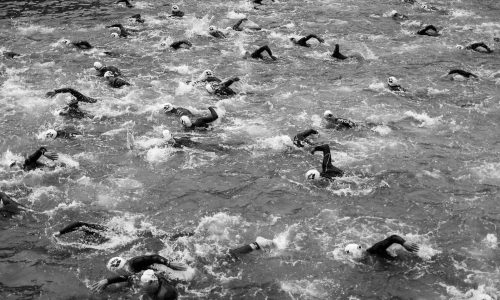
What is the long run?
Ever wondered what people mean when they talk about a long run? What is a long run for one person may not be long for another. In this article I will explain to you the characteristics of this endurance run.
The long run is simply your longest run during the week. It is not a set distance. It is also the most important run of the week for athletes. Building endurance is important if you want to hold your fast pace for a longer period of time. The workout that best builds endurance is the long run.
There are different types of long runs that you can distinguish and use to your benefit. It does not have to be a flat pace run! Read the article below to get familiar with the long runs and include it in your training schedule.
Benefits of a long run

What is long for one person may not be long for another. It depends on how experienced you are and what race you are training for. It is not a set distance.In general, long runs have to be done at an easy, conversational pace. They should cost relatively little effort.
Most runners are most hanidcaped by their lack of endurance. If you’re not an endurance athlete for most of your life, you will most probably be a faster runner, if you build endurance. All of us can run fast, but few can hold that pace for a much longer period of time.
If you can run fast for 10, 30, 60 seconds, this is an endurance problem. If we build that endurance, we can better hold that speed for a longer time. Of all the workouts we can do, the best workout that builds endurance is the long run.
The long run helps you bring consistency and feel better during all the other runs you do during the week. The long run will give you the strength, stamina and efficiency that is going to help you in different other types of runs and races.
You’ll be able to discover what drinks do well on your stomach. I have done a half Ironman with energy drinks that I did not train with; a disaster. Gastric trouble is the main reason most people don’t finish a long-distance race. Consuming too much or not enough water or energy drink can be fatal.
Need some inspiration and motivation for your trainings? Check out these Instagram accounts.
Four types of long runs
Regardless of the distance that can be covered, everyone can start to include different types of long runs in their schema. There are variances in long runs. That makes training more fun, effective and efficient. If you want to include them in your triathlon training schedule, please read this blog how to do that.
Progressive long run
A progressive long run is a training where you would start slow and finish faster. So you would either gradually increase your speed, or keep your ‘slow’ speed for the first half and apply your ‘fast’ pace in the second half. That time can differ from one second to 30 minutes, as long as it is faster.
This is what is being called a negative split in running terms. Running negative splits in training is an effective way to build both your aerobic base and the mental toughness required in the late stages of a long event.
Hilly long run

The hilly long run is essentially a hilly surface on which you do your training, going up and down on the hills constantly. There are different kinds of variations on the hilly long run.
You could do a rollercoaster run. Here you are running as much as you can either uphill or downhill. So you’re finding as hilly terrain as possible. By doing this you are building additional strength and athleticism that is going to make you a better runner.
Another variation is a long hill run. Find the longest hill in your area. That could be a hill of 500 meters up to 3 kilometers. Include practice running this hill during the last part of your long run.This gives you an aerobic stimulus so that you’re building more endurance, and gives you more strength.
Fartlek long run
Fartlek long runs are short repetitions where you increase your speed, and then get back to your normal speed. For example, increase the speed 5 times per minute for 10 seconds, 1 time per minute for 30 seconds, as long as it is repetitive.
The pace in which you do these fast sections can for example be your 10 K pace, when you are training for a marathon. If you feel like it, you can start including them in the last part of your long run.
The goal of fartlek is to get your legs turning over when you are already tired. By doing this, you recruit more muscle fibers, and it will open up your range of motion.
Long slow distance run

The long slow distance (LSD) is the run most people associate with cardio. The intensity of LSD training is at a comfortable conversational pace, generally between 60% and 75% of maximum heart rate.
The level of exertion of LSD exercise is below the aerobic threshold, which is the point when breathing suddenly becomes faster and labored, and lactate acid begins to accumulate in the blood.
LSD training strengthens the cardiorespiratory system and causes a variety of changes that improve how much oxygen your body can use during exercise (called VO2 max), boosting endurance performance. It increases how much oxygen is delivered to the muscles and the amount of oxygen they are able to use. So as boring as it may sound, LSD runs bring a lot of advantages.
What are other types of runs?
Interval run
Interval running involves running at a fast pace for a set time followed by jogging at a slower pace for a set time, and so on. This style of running aims to maximize your aerobic fitness while minimizing your overall time spent exercising.
Read more about this type of run in this blog.
Tempo run
With the long run you apply an easy pace for a long period of time. With the interval run you go all out in a short amount of time. But what about those paces in between? Workouts that target that middle ground – tempo runs.
The tempo run help you understand how different paces feel, putting you more in tune with your abilities (and limits). They also build mental toughness, an asset when you’re aiming to go longer or faster. And they develop capillary beds (which provide oxygen to working muscles) more efficiently than easy or hard runs do.





